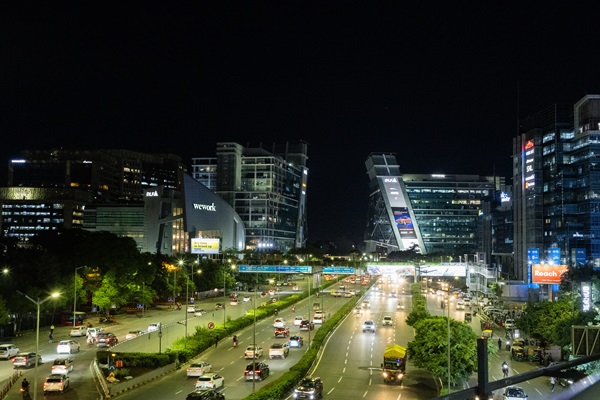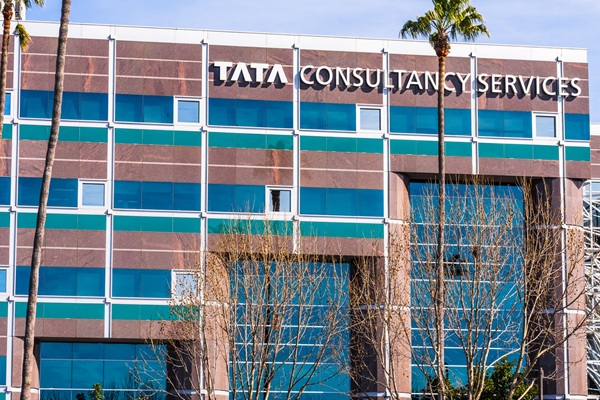.png)
By Madhavi Arora
Madhavi Arora is Chief Economist at Emkay Global Financial Services, where she focuses on macroeconomic research and asset allocation strategies.
September 22, 2025 at 8:42 AM IST
The United States’ sudden decision to raise the H-1B visa fee to $100,000 for new applications has pulled Indian services firmly into the global trade and technology crossfire. Existing visa holders and renewals remain untouched, which limits the immediate disruption, but the broader implications are far more significant. The increase signals a structural shift in the operating environment for Indian IT exporters and demands a reassessment of how India’s services economy integrates with the world.
The near-term revenue and margin impact is likely to be limited. India’s IT and software exports stood at $181 billion gross and $160 billion net in 2024–25. Growth in net IT exports for 2025–26 had been projected at 5%, with a 7% compound pace over the next five years. Even if the fee regime sustains, growth would not collapse, though the trend could ease below 4%. For now, the balance of payments outlook is steady. The current account deficit is projected at 1.2% of GDP in 2025–26, with net remittances expected at $120 billion, unchanged from 2024–25. The risks tilt slightly downward, but not enough to alter forecasts.
What matters most is how the cost shock interacts with operating models. Larger IT firms have steadily reduced their reliance on H-1B visas, bringing dependence down to 20–50% of US operations. They have simultaneously increased local hiring to 50–70% of US staff, now amounting to over 100,000 employees. The build-out of US delivery centres, combined with automation and subcontracting, provides further insulation.
Mid-tier and smaller firms remain more exposed. Their continued dependence on body-shopping models leaves them vulnerable in client-facing roles, particularly in consulting and high-touch functions. These roles depend heavily on on-site presence in the US, which still accounts for 55–60% of India’s IT export market.
The bigger story, however, lies in the structural acceleration of Global Capability Centres.
India already hosts more than 1,800 GCCs, generating $60 billion of exports. Their trajectory has been steep, and projections suggest the number will cross 2,000 by 2030. Revenues are expected to exceed $110 billion well before the end of the decade, and at a compound growth rate of 18% could rise to $150 billion by 2029.
Headcount is expanding just as fast, from 1.7 million employees today to 4.5 million by 2030, even as IT services scale from 5.4 million to 7.5 million. This transition alters India’s export narrative from vendor-led on-site billing to offshore digital engineering and captive operations. It also increases the stickiness of exports by embedding India more deeply in the global delivery architecture.
Structural Shift
In 2024–25, Business, Professional and Management Consulting exports rose 25% to $57 billion, while R&D consulting increased 20% to $8 billion. Early trends in 2025–26 have been even stronger, with growth rates exceeding 80% year on year. These shifts underscore how India’s services exports are climbing the value chain, supplementing traditional IT with high-end consulting and research capabilities.
The burden of the new visa regime will not fall evenly. About 75% of Indian H-1B employment and initial petitions are tied to US-headquartered companies. Amazon employs 10,044 H-1B staff, Microsoft 5,189, Meta 5,128, Apple 4,202 and Google 4,151. Among Indian firms, Infosys employs 8,137, TCS 7,566, HCL America 2,952, LTIMindtree 2,136, Wipro 1,636, and Tech Mahindra Americas 1,255. These numbers illustrate why the shock is asymmetric. Large US tech firms will bear much of the direct cost, while Indian IT exporters will feel the squeeze in specific operating models rather than across the board.
The second-order effects merit equal attention. The accelerated ramp-up of GCCs will intensify competition for skilled talent in India, raising wage benchmarks that startups and lower-value vendors will find difficult to match. Some companies may move into tier-two Indian cities, which could benefit local commercial and residential real estate. Others may explore cheaper offshore hubs, such as the Philippines, to retain cost advantages. Valuations of Indian IT firms are likely to carry a higher policy and geopolitical risk premium as investors account for the increased uncertainty.
Further policy risks from Washington add to the caution. The proposed HIRE Act, which seeks to impose a 25% tax on outsourcing payments, would directly challenge the economics of offshoring. While the Act is not yet law, its presence in the debate signals a more restrictive US stance on foreign talent. Should such measures gain traction, the combined effect with higher visa fees could accelerate the need for Indian firms to adopt new models of delivery and client engagement.
The H-1B visa fee hike should therefore be viewed less as an immediate crisis and more as a catalyst for transformation. The short-run hit to revenues and margins will likely be absorbed, particularly by the larger players who have diversified their hiring and delivery structures. Over time, the outcome could be positive. The fee shock is likely to reinforce a shift towards Global Capability Centres, offshore digital engineering and specialised consulting, embedding India’s role more deeply in the global services economy.
Growth in services exports may slow at the margin, but the composition of that growth will be sturdier and more resilient. The industry’s adaptability has been proven time and again. The new visa regime is only the latest nudge forcing Indian IT to evolve towards a model that is less dependent on temporary visas, more entrenched in offshore value creation, and better suited to withstand geopolitical uncertainty.




